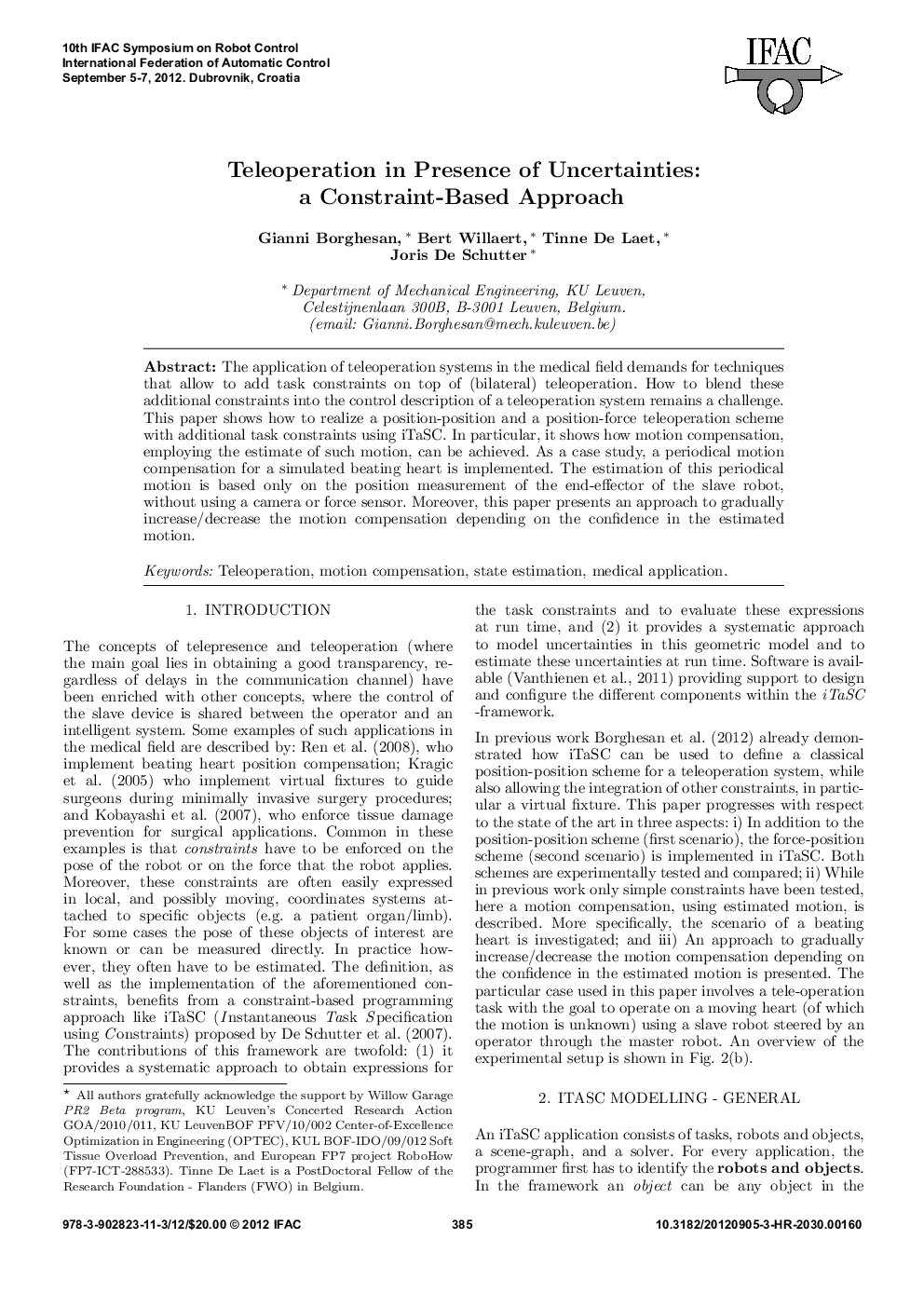| Article ID | Journal | Published Year | Pages | File Type |
|---|---|---|---|---|
| 717454 | IFAC Proceedings Volumes | 2012 | 8 Pages |
The application of teleoperation systems in the medical field demands for techniques that allow to add task constraints on top of (bilateral) teleoperation. How to blend these additional constraints into the control description of a teleoperation system remains a challenge. This paper shows how to realize a position-position and a position-force teleoperation scheme with additional task constraints using iTaSC. In particular, it shows how motion compensation, employing the estimate of such motion, can be achieved. As a case study, a periodical motion compensation for a simulated beating heart is implemented. The estimation of this periodical motion is based only on the position measurement of the end-effector of the slave robot, without using a camera or force sensor. Moreover, this paper presents an approach to gradually increase/decrease the motion compensation depending on the confidence in the estimated motion.
